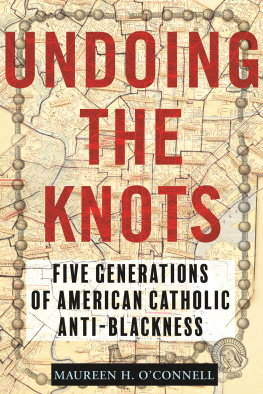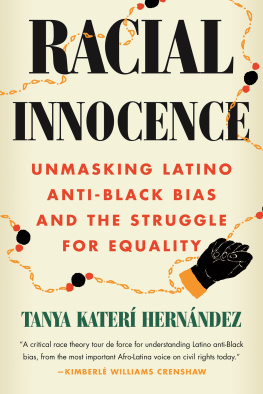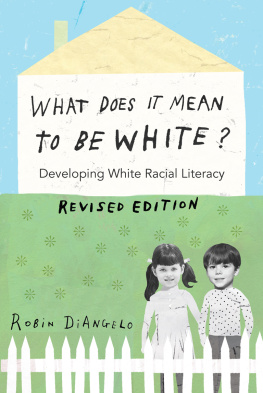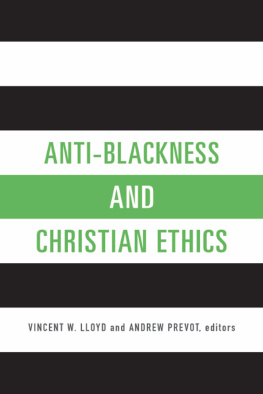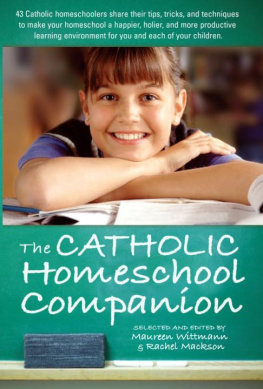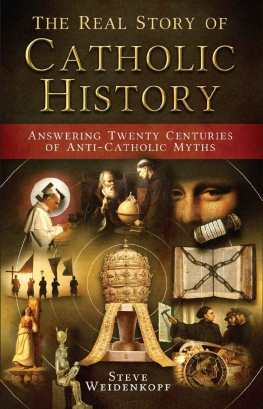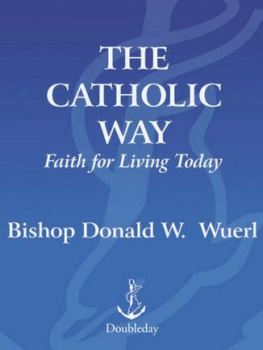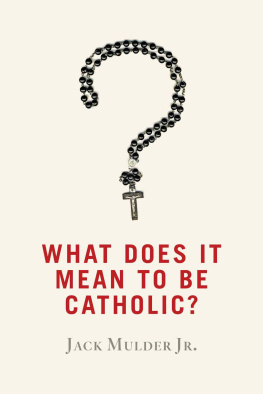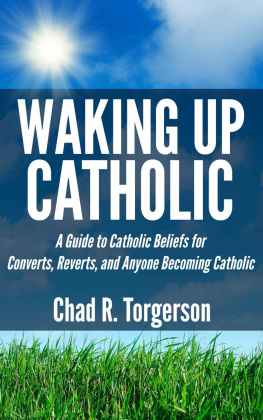Contents
Pagebreaks of the print version
Guide

BEACON PRESS
Boston, Massachusetts
www.beacon.org
Beacon Press books
are published under the auspices of
the Unitarian Universalist Association of Congregations.
2021 by Maureen H. OConnell
All rights reserved
Printed in the United States of America
24 23 22 218 7 6 5 4 3 2 1
Text design and composition by Kim Arney
Library of Congress Cataloging-in-Publication Data
Name: OConnell, Maureen H., author.
Title: Undoing the knots : five generations of American Catholic anti-Blackness / Maureen H. OConnell.
Description: Boston, Massachusetts : Beacon Press, [2021] | Includes bibliographical references and index. | Summary: The author goes on a pilgrimage of her familys history in Catholic parishes throughout one of the largest dioceses in the country to excavate the legacy of American Catholic anti-Blackness she has inherited and discover spiritual resources for resisting itProvided by publisher. Identifiers: LCCN 2021032642 (print) | LCCN 2021032643 (ebook) | ISBN 9780807016657 (hardcover) | ISBN 9780807016756 (ebook)
Subjects: LCSH: African American CatholicsPennsylvaniaPhiladelphiaBiography. | Catholic ChurchPennsylvaniaPhiladelphiaHistory. | Race relationsReligious aspectsCatholic Church. Classification: LCC BX1407.B63 O26 2021 (print) | LCC BX1407.B63 (ebook) | DDC 282/.7481089dc23
LC record available at https://lccn.loc.gov/2021032642
LC ebook record available at https://lccn.loc.gov/2021032643
For my family, here and gone ahead; and for my teachers, especially the unexpected ones
INTRODUCTION
MATTERING
St. Vincent de Paul
THE INHABITANTS OF PHILADELPHIA , the City of Brotherly Love and Sisterly Affection, have wrestled with the moral and civic quandary of who matters when it comes to loving each other ever since King Charles II paid a debt to the Penn family with a forty-thousand-square-mile land grant in North America in 1681. William Penn tolerated both Catholics and slavery in his Holy Experiment, and eventually five generations of my Catholic family became a part of that unholy mixture.
Philadelphia became the Birthplace of Freedom and the Cradle of Liberty when the Founding Fathers signed the Declaration of Independencethe only Catholic to do so also being a slave ownerand drafted the Constitution in Independence Hall. But only white landowning men enjoyed those liberties and freedoms. The nine hundred enslaved Black people in Philadelphia at the time were not deemed worthy of being loved with that kind of justice.
Later, when European immigrants poured into the Workshop of the World, native Black artisans and machinists struggled to get a toehold in the factories that dominated the cityscape. During the Golden Age of American Catholicism in the early twentieth century, Philadelphia became the City of Neighborhoods, and with the help of priests and the endorsement of the archbishop, it maintained racialized neighborhood boundaries. It morphed into Up South with the arrival of Southern Blacks, refugees of economic, if not actual, lynching. By the 1950s, whiteCatholics were already building a sprawling just out of Philadelphia (JOP) Catholic infrastructure in the citys suburbs. Home loans for Black Philadelphians who wished to move JOP were not forthcoming.
By the time I was born in 1973, ten years after the March on Washington for jobs and equality and on the cusp of the citys throw-down bicentennial celebration, post-industrial Philadelphia was already devolving into Filthadelphia. In the 1990s we became Killadelphia, with one of the highest gun-murder rates in the country, the majority of the dead being Black men.
Today, Philadelphia is two decades into its The Place that Loves You Back phase, a moniker intended to lure tourists and bolster our eds and meds economy. But Black service workers in hotels and restaurants, as well as Black homeowners in some of the gentrifying neighborhoods where my people used to live, arent exactly feeling the love. Nor was the corporate leadership of Starbucks in April 2018 when a white barista called the police on two Black business partners in a Center City store, prompting the closure of 8,000 stores nationwide for a day of anti-bias training with 175,000 employees.

THIS is MY CITY . And it is the context in which, in the spring of 2017, some members of my parish in the Germantown section of Philadelphia, home to the worlds first anti-slavery movement in 1688, wanted to hang a Black Lives Matter banner out in front of the church. We were latecomers to the movement for Black lives. Other more progressive denominations in our Philadelphia neighborhood had already proclaimed this slogan for months, so our silence was conspicuous. Yet we were also light-years ahead of most other Catholic parishes when it came to taking public stands for marginalized groups. It was not unusual for the litany of announcements about justice-related activities to delay the recessional hymn by fifteen minutes on Sundays.
A Black Lives Matter banner is a no-brainer for St. Vincents, I thought, when another parishioner named Chris told me about the plan. By that spring we were four years into a merger with two predominantly Black parishes in Germantown. The violence assailing Black people in Philadelphia was not out there somewhere in the nations poorest big city. It was right here under the peeling frescoes of St. Vincent de Paul and St. Louise de Marillac on the churchs domed ceiling. It was gripping the people who filled the aisle with hugs during the exuberant sign of peace, showing each other how much they mattered.
Chris is one of the most fascinating Catholics I have ever met. Its not just his dreadlocks or the tambourine he shakes in time with the choir. Or how when I sit directly behind him at Mass I can feel the reverberations of his audible expressionsAmen! or Thats right! or My Lordin the kneeler where I prop my feet. What captivates me is his devotion to our traditions despite the US Catholic Churchs disdain for Black Catholics like him. He does not hold back in professing the pain of being excluded by our Church, and he insists on the radical promise of inclusion at the core of the Gospels message. The paradox of his anguished hope gives him a charismatic holiness. People seek out his hugs at the sign of peace. They clap in time with his tambourine. They listen to what he has to say about what it means to be a Catholic in the midst of anti-Black racism.
As for me, I had searched in vain for that kind of propheticism from Catholic leaders after the deaths of one unarmed Black person after another. Not long after joining St. Vincents, I found myself intoning Chris with my simple prayer of gratitude for having landed in a parish with the courage to stand up for Black lives: Thank you, Jesus.
The time is ripe for the banner, I said impatiently to Chris. If not now, when?
Chris shared the concerns about the banner that hed raised with our pastor and the lay leaders in the parish. My certainty gave way to the all too familiar sinking feeling I get whenever I am about to be confronted by my whiteness. For example, Chris asked, did the Peace and Justice Committee realize that the banner could evoke pushback from white parishioners? Some were already nostalgic for the whiter days and ways of the Old St. Vincents before the merger. And what about possible Blue Lives Matter pushback from the police? Would the neighbors in the parishs predominantly Black neighborhood end up dealing with potential fallout?

